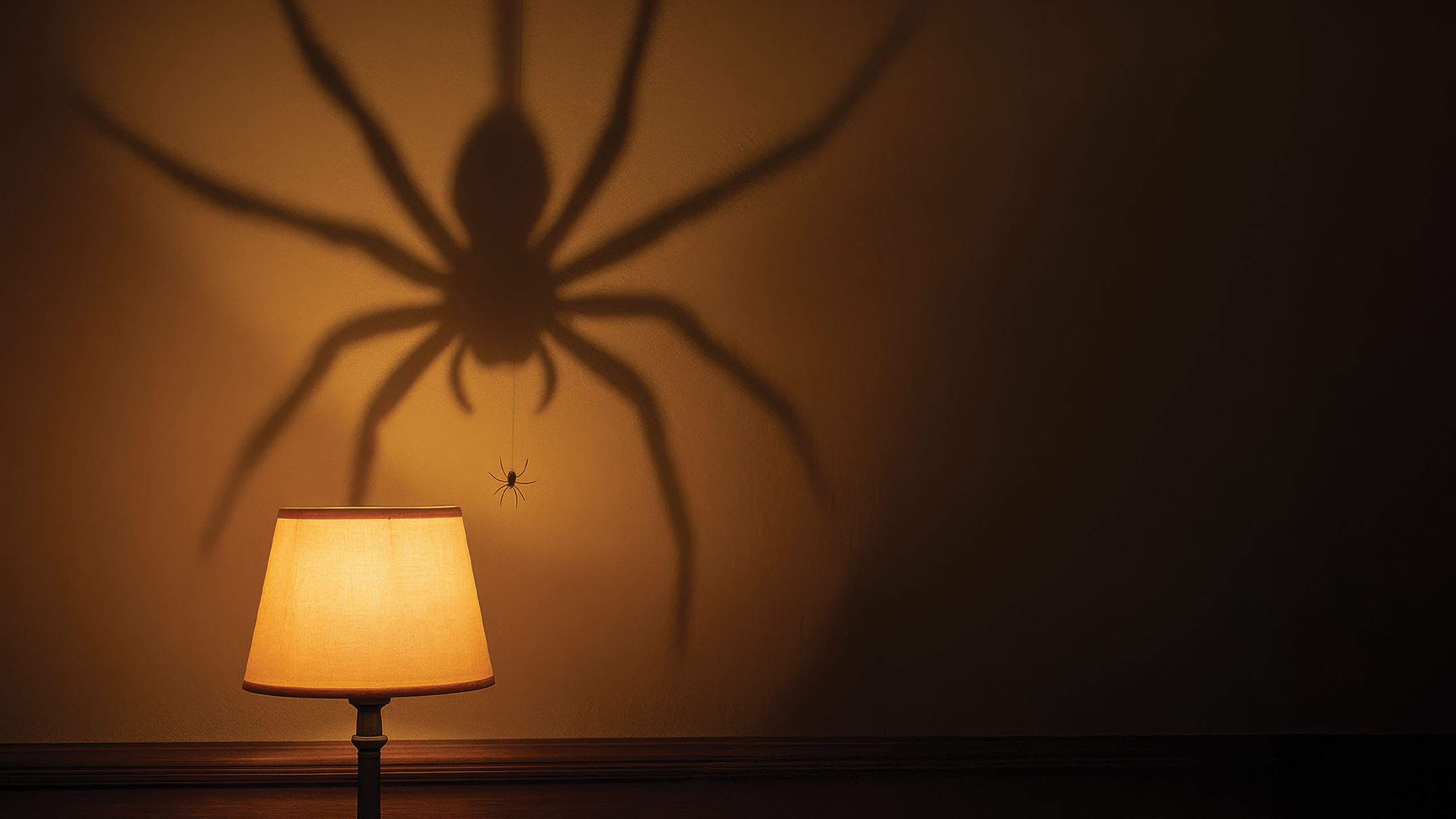When Fear Steers the Soul: Navigating Life Beyond Imagined Dangers

In This Article
-
Fear is a gift, a sense given to us not to imprison life but to protect it. Life wasn’t meant to be burdensome, filled with dread, nor to be an endless fight against the shadows of what be.
-
If there’s a chance, a real risk—say one in two, three, or even five—then yes, caution is wise. It’s a fear that warns, a precaution that has value. But to dwell on a chance as faint as one in twenty, thirty, or forty, that’s not caution; that’s giving fear the reins.
-
In nearly all cases, the fears themselves are not the direct cause of death. Although the most common cause of death is heart disease, it is not in the top twelve among fears.
One evening, as the last light of dusk faded over the Grand Canyon, I found myself in the company of a friend, walking toward the dock that spanned the Colorado River. Our plan was to visit the Havasupai Falls, and we had no other choice but to board a small rowing boat to cross. Yet as we neared the dock, my friend hesitated, a shadow of anxiety crossing his face.
“I can’t,” he whispered, almost to himself. “I’m afraid it’ll sink.”
I tried to reassure him. “Think of it this way: there are thousands of boats here on the water, night and day. How many do you think sink each year?”
He paused, calculating. “Maybe one or two,” he conceded, “or perhaps none at all.”
“Then,” I said, “out of all those days in the year, why worry about the slim chance that something might go wrong tonight?”
Still, he hesitated. So, I gently urged him further, “Let’s think about life itself. We’re each given a set span of years, yet any day might be our last. How does this small risk compare to life’s uncertainties?”
He came to his senses, and though his hands still trembled, he allowed me to guide him aboard. Once seated on the small wooden bench, he looked out at the gentle sway of the dark water and held tight to the edge, as if his life depended on it. I leaned in close, choosing my words with care. “Listen, my friend,” I said, “fear is a gift, a sense given to us not to imprison life but to protect it. The Creator gave it to preserve us, not to make us captives of groundless anxieties. Life wasn’t meant to be burdensome, filled with dread, nor to be an endless fight against the shadows of what be.”
He listened, his gaze fixed on the faint stars reflected in the water. I continued, “If there’s a chance, a real risk—say one in two, three, or even five—then yes, caution is wise. It’s a fear that warns, a precaution that has value. But to dwell on a chance as faint as one in twenty, thirty, or forty, that’s not caution; that’s giving fear the reins. When fear is left unchecked like that, it twists life into a form of torment.”
He released his grip slightly and nodded, his expression shifting from one of fear to quiet acceptance. As the boat glided forward, it seemed that the weight on his heart lifted, the once-paralyzing fear replaced by a newfound calm. The night stretched on, cool and quiet, as we sailed across the Colorado River, each of us more at peace than before.
Life is meant to be lived
Just as our rowing boat glided quietly along the waters that evening, the truth settled in: life is meant to be lived, not constrained by irrational fears. Stepping off the boat, the realization dawned on my friend that fear, while an instinctual safeguard, can become a burden when unchecked. This wisdom echoed in the simple observation that we should fear what is reasonable to fear—grounded, tangible threats—not distant shadows.
Some fears are, in fact, rational. Those who avoid cigarettes consider the well-known risks of heart disease and death. Many refrain from sweets or red meat, well aware of links to serious illnesses such as diabetes, cancer, or stroke. Fear of speeding, a key cause of car accidents, is similarly grounded in solid reasoning. But when we step back to examine society's most widespread fears, an interesting contradiction emerges. Among the most common fears—like spiders, heights, or snakes—their actual threat to our lives pales in comparison to more mundane risks, like heart disease or cancer.
Phobias
Consider arachnophobia, the most common fear of all. In reality, only about six people die from spider venom in the United States each year, yet this is a prevalent terror. The probabilities are not on the side of these fears: there's a better chance of surviving a shark attack than falling prey to a spider's bite. Similarly, the fear of flying—statistically safer than driving—is far more common than fear of heart disease, even though it’s the leading cause of death. Fear, then, can misguide us away from real dangers toward distant, unlikely scenarios, ensnaring us in what we cannot easily control.
Individuals with agoraphobia, for example, face a particular challenge, as their condition severely limits their quality of life. During the recent pandemic, many could finally empathize with those trapped in their homes by this fear. Similarly, the claustrophobic will avoid enclosed spaces, even critical medical scans that might save their lives. These conditions highlight the hidden impact of irrational fears, quietly reshaping lives in ways most of us will never see.
Some say the only phobia with practical value is mysophobia—the fear of germs—especially since the pandemic intensified our awareness of bacteria and viruses lurking around us. Those with this phobia avoid handshakes, public restrooms, and even loved ones in social settings. Mysophobia can lead to excessive handwashing, avoiding physical touch, and constant sanitation, often disrupting daily life.
Curiously, a different phobia also deserves mention—trypophobia, the fear of clustered holes. Although it does not align with any logical threat, it can evoke a visceral reaction of disgust and anxiety, from a honeycomb or lotus pod to the pebbled surface of a sidewalk. This curious phobia is widespread, yet cancer phobia ranks lower. And, finally, at twelfth place, sits the fear of death itself.
We fear things that are unlikely to hurt us; spiders, snakes, and heights. You may find many of these fears ridiculous. Some people experience panic attacks in open spaces or when encountering dogs or lightning. Others fear elevators and flying. These fears can severely disrupt people's lives. Yet, in nearly all cases, the fears themselves are not the direct cause of death. Although the most common cause of death is heart disease, it is not in the top twelve among fears. Cancer, the second most common cause of death, is the eleventh most feared thing. In addition, while aerophobia—the fear of flying—is sometimes linked to the fourth leading cause of death, which is “accidents” (unintentional injuries), this association is misleading. Only about 1000 people die while flying yearly, which is the odds of approximately 1 in 11 million compared with 1.24 million who die in ground-traffic accidents. The odds of being killed in a car crash are approximately 1 in 5,000. However, most people feel safe in their cars, not on a plane. Fear is an emotion, and facts do not easily tame emotions. Individuals with claustrophobia may refuse to get an MRI even if the procedure is essential for diagnosing a medical condition because they are uncomfortable in the tight space of the scanner. Ultimately, fear is more than just an emotion—it’s a lens that distorts reality, a winding path through fields of both danger and illusion. True peace lies in understanding which threats are worth the worry and which can be set aside. Life’s real value unfolds only when we release the imagined perils that bind us and learn to sail freely, even when the waters seem uncertain.
According to the National Lightning Safety Council, 2021 marked a new milestone for the fewest documented lightning-related deaths in the U.S., with only 11 fatalities. Previously, the record low, documented by NOAA (National Oceanic and Atmospheric Administration), was 16 deaths in 2017. Statistically, in a given year, only about one in 30 million Americans will be killed by lightning, underscoring how extraordinarily rare such incidents are. However, the distribution of lightning strikes varies significantly by location, creating unusual and even repeated encounters with this phenomenon for some individuals.
One notable case is that of Jorge Marquez, who, remarkably, survived being struck by lightning for the fifth time in 2002. While he emerged uninjured, he did experience some consequences: his hair was burned in the first incident, and he lost his fillings. Marquez’s experience might seem to defy all probability, yet his circumstances may partially explain his repeated misfortune. As a Cuban farm worker, Marquez likely spends much of his time outdoors, even in inclement weather. Furthermore, Cuba is recognized as one of the most lightning-prone regions globally. Although his line of work and geographical location increase his risk, Marquez still exemplifies an unusually unlucky streak. Another such case of misfortune is that of assistant director Jan Michelini, who was struck by lightning twice while filming Mel Gibson’s The Passion of the Christ in Italy. Although Michelini was not seriously harmed, his double encounter with lightning raises questions about the role of chance—and perhaps divine intervention—in such incidents.
Beyond sheer probability, Marquez and Michelini’s stories touch on a broader human response: fear, especially fear of the uncontrollable. Many people feel heightened anxiety when they cannot influence or control their surroundings. For instance, passengers on airplanes often feel uneasy, as they are not in control; the pilot holds that power. Similarly, people generally prefer to drive rather than be driven, as driving provides a sense of control. Congested traffic becomes frustrating partly because we can’t freely move through it. As a result, limited control often leads to heightened worry and anxiety. Underneath these reactions lies a desire for control over every situation, whether reasonable or not.
Yet this fear of losing control is only one factor in the complex landscape of human anxieties and phobias. Unpredictable and untameable elements—such as lightning, wild animals, and confined spaces—tend to evoke more anxiety than situations we perceive as manageable, like riding a bike, handling a firearm, or taking medications ourselves. Even when these “controllable” activities carry real risks, they may feel safer because they appear to be within our grasp.
The human drive for control can even influence drastic decisions, such as the choice to end one’s life, seen by some as a final attempt to assert control over an otherwise uncertain existence. Moreover, the desire to regulate one's environment and body often manifests in psychological issues, including eating disorders, addiction, and even suicidal ideation. In eating disorders, individuals obsessively control what enters their bodies, reflecting a need to dominate their physical self. With addiction, a person may be attempting to modulate their internal state and emotions artificially. Each of these struggles highlights how attempts to impose control can, paradoxically, become destructive.
Our quest for control, while rooted in the natural desire to manage risks, can drive us to harmful behaviors when taken to extremes. Understanding this urge might help us approach anxiety with compassion and awareness—recognizing that some things will always be beyond our control, and that acceptance can bring a peace that rigid control cannot.
“The thunder glorifies Him with His praise, and so do the angels, in awe of Him. And He lets loose the thunderbolts and strikes with them whom He wills. Yet they stubbornly argue about God, (notwithstanding all evidence that) He is severe in repelling and retribution” (Qur’an 13:13). This verse reminds us of a higher order beyond our understanding, a power that commands nature itself—thunder, lightning, and all the forces we perceive yet cannot control. As the thunder praises the Creator, even the angels tremble, not out of irrational fear, but out of a reverent awe that aligns them closer to truth. And so, this passage calls us to reflect on what we choose to fear, teaching us that the highest purpose of fear is reverence and humility before the Creator, not to be burdened by the uncertainties of the world.
Say: “Death, from which you flee, will surely meet you in any case. Then you will be returned to the Knower of the Unseen and the witnessed, and He will make you understand all that you were doing (and call you to account)” (62:8). No matter how much we fear or try to evade death, it is an inevitable reality. It will find us, no matter where we hide or how hard we try to avoid it.
The true essence of this message lies in understanding what we should genuinely fear. It is not the uncertainties of life or the inevitability of death, but rather failing to fulfill the duties we are assigned with in this life. The real fear should stem from the accountability of our actions when we stand before our Creator. Life is a test, and its true success is determined by how well we adhere to divine guidance.
When we focus solely on the fears of this world—whether they pertain to failure, loss, or even death—we risk overlooking the greater purpose of our existence. Such fears are fleeting, temporary, and often exaggerated. However, the fear of standing before God unprepared, having neglected His commands, is a fear that is both real and worthy of reflection. Thus, our energies should not be spent running from death but rather preparing for what comes after it. In this preparation lies true peace, as it aligns us with our ultimate purpose and brings clarity to our actions. Let us redirect our fears toward accountability to God, for only in fulfilling His commands can we find salvation and eternal tranquility.
When we anchor our lives in this perspective, fear transforms into wisdom, liberating us from the false dangers conjured by our imagination. Fear, often born from the unknown, becomes a shadow that looms over every step we take. However, when we shift our mindset and accept that uncertainty is a natural and inevitable part of life, we realize that it is not our enemy but an integral part of our growth. Life, in its essence, is unpredictable—a complex dance of joy and sorrow, triumph and failure, discovery and loss. By resisting this truth, we trap ourselves in a cycle of anxiety, trying to control what cannot be controlled. But when we embrace life’s unpredictable journey, something remarkable happens. Fear gives way to peace—a deep, abiding peace that comes from knowing that we are not meant to foresee every turn or avoid every challenge. Courage begins to take root, not as the absence of fear but as the strength to move forward despite it. This courage fuels a faith that empowers us to rise above fleeting worries, grounding us in a profound trust in the process of life itself. In this new perspective, every challenge becomes an opportunity, every setback a lesson, and every unknown a chance to grow. We cease being prisoners of uncertainty and instead welcome it as a companion that propels us toward self-discovery and resilience. By transcending fear, we break free from the illusions of control and security, allowing ourselves to fully embrace the present moment. Life, with all its unpredictability, becomes not something to endure but something to cherish. In the end, it is this freedom—the courage to face life with an open heart—that reveals the true essence of living. Fear dissolves, and in its place, we find the boundless possibility of life itself.
| The Ten Leading Causes of Death | The Twelve Most Common Phobias |
|---|---|
|
|
|
|
1. Heart disease |
1. Arachnophobia: The fear of spiders |
|
2. Cancer |
2. Ophidiophobia: The fear of snakes |
|
3. Chronic lower respiratory diseases |
3. Acrophobia: The fear of heights |
|
4. Accidents(unintentional injuries) |
4. Agoraphobia: The fear of open and crowded spaces |
|
5. Stroke(cerebrovascular diseases) |
5. Cynophobia: The fear of dogs |
|
6. Alzheimer’s disease |
6. Astraphobia: The fear of thunder or lightning |
|
7. Diabetes |
7. Claustrophobia: The fear of small spaces like elevators, cramped rooms, and other enclosed places |
|
8. Influenza and pneumonia |
8. Mysophobia: The fear of germs |
|
9. Nephritis, nephritic syndrome, and nephritis |
9. Aerophobia: The fear of flying |
|
10. Intentional self-harm (suicide) |
10. Trypophobia: The fear of holes |
|
11. Carcinophobia: The fear of cancer |
|
|
12. Thanatophobia: The fear of death |
References
http://lightningsafetycouncil.org/
https://www.who.int/news-room/fact-sheets/detail/the-top-10-causes-of-death
https://www.statista.com/statistics/263443/worldwide-air-traffic-fatalities/
https://theweek.com/articles/462449/odds-are-11-million-1-that-youll-die-plane-crash









